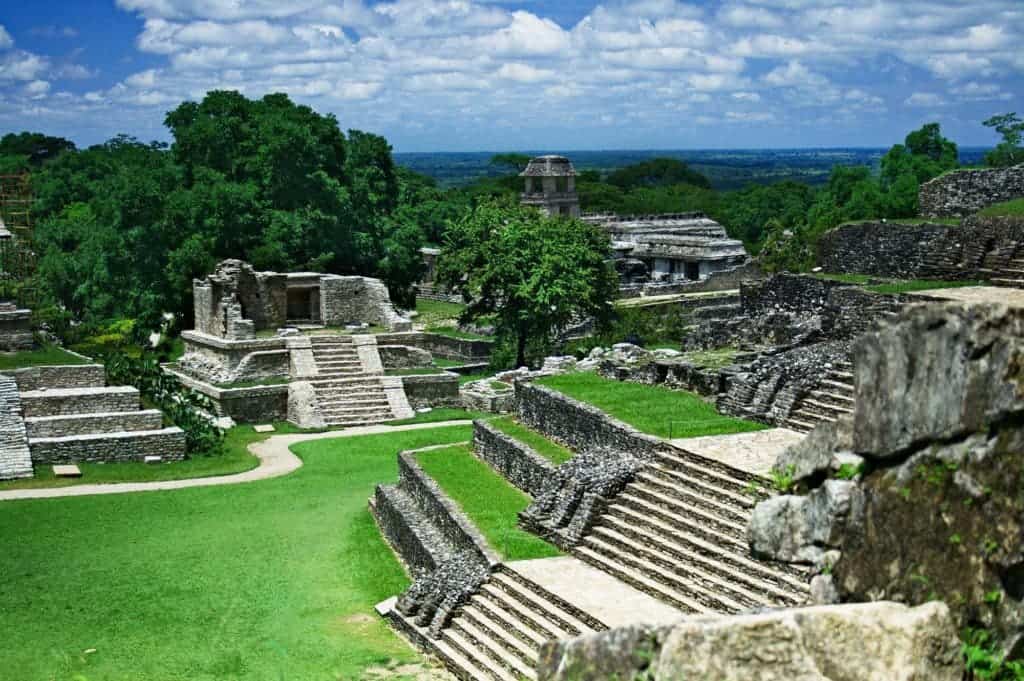The Maya built one of the greatest civilizations in the Americas, and the story of their demise has fascinated people for centuries. Now, a new study reports that environmental aspects — particularly, drought — were a key aspect of their decline.

The first mention of a true Maya civilization hails from millennia ago, in 2000 BC. They reached the peak of their power much later, during the Classic period, which lasted up until the year 900 CE. Most Mayan cities were sprawling architectural displays, featuring dazzling palaces, pyramid-temples, ceremonial ballcourts, and structures aligned for astronomical observation. The Mayans tended to develop haphazardly, showing little concern for what the future could bring — and who could blame them? During their zenith, they controlled the entire Yucatán Peninsula and all of the territory now incorporated into the modern countries of Guatemala and Belize, as well as the western reaches of Honduras and El Salvador.
But their lack of concern was not without consequence after all. During the 9th century, their power started to decline. Their beautiful limestone cities were abandoned and step by step, the Maya civilization withdrew and quickly entered decline. There are mentions of Mayans after the year 1000 CE, but their civilization was almost completely wiped off.
The reasons for their decline are not simple — invasion, war, environmental degradation, and collapsing trade routes all had a role to play. But in the 1990s, an interesting theory emerged: after correlating the Maya decline with environmental data, researchers found a period of extended drought — long and severe enough to affect the stability of the empire built by the Maya.
“The role of climate change in the collapse of Classic Maya civilisation is somewhat controversial, partly because previous records are limited to qualitative reconstructions, for example whether conditions were wetter or drier,” said Nick Evans, a PhD student in Cambridge’s Department of Earth Sciences and the paper’s first author.
“Our study represents a substantial advance as it provides statistically robust estimates of rainfall and humidity levels during the Maya downfall.”
Evans and colleagues analyzed the different isotopes of water trapped in gypsum — a mineral that can form on the bottom of lakes during periods of severe drought. They found that annual precipitation levels decreased between 41% and 54% during the period of the Maya civilization’s collapse, with periods of peak drought corresponding to a 70% reduction in rainfall.
[panel style=”panel-info” title=”Gypsum water” footer=””]In periods of drought, more water tends to evaporate from lakes such as Chichancanab, where this study was carried out. Because the lighter isotopes of water evaporate faster, the remaining water molecules (which also contain other chemicals) become heavier. A higher proportion of heavier isotopes such as oxygen-18 and hydrogen-2 (deuterium), would, therefore, indicate drought conditions. Researchers have mapped the proportion of different isotopes contained within each layer of gypsum, essentially charting the levels of rainfall over the period of the Mayan collapse.
[/panel]
Professor David Hodell, Director of Cambridge’s Godwin Laboratory for Palaeoclimate Research and the senior author of the current paper, was the first to draw a correlation between the drought and the period of Mayan decline. He praised the gypsum-measuring methodology, saying that it leaves very little room for interpretation.
“This method is highly accurate and is almost like measuring the water itself,” said Evans.
While the circumstances that lead to the decline of the Maya are complex and drought cannot be singled out as the one big culprit yet, it does seem that at the very least, drought was an important aspect of it.
Now, researchers will try to use more localized measurements and build more precise models, to see how the drought would have affected agriculture — most importantly, the Maya’s staple crops, such as maize.
Journal Reference: Nicholas P. Evans, Thomas K. Bauska, Fernando Gázquez-Sánchez, Mark Brenner, Jason H. Curtis, David A. Hodell. Quantification of drought during the collapse of the classic Maya civilization. Science, 2018 DOI: 10.1126/science.aas9871


